In November 2017, the world release of the mobile fighting game Shadow Fight 3 by the Russian Nekki took place. The company’s founder Dmitry Terekhin and Business Development Director Nikita Korzhavin spoke about the key stages of Shadow Fight 3 development.
The post was originally published on Korzhavin’s blog on the Telegraph. With the kind permission of the authors, we host the material.

Dmitry Terekhin and Nikita Korzhavin
Prerequisites for creation
After the great success of Shadow Fight 2 (over 250 million installations worldwide) we immediately thought about a new project. There were a variety of ideas, for example, to make a beautiful slasher about cyberpunk samurai. But in the end it became obvious that doing a continuation of SF is the surest way. A huge army of fans passed the second part and waited for the continuation. In addition, watching the market, we realized that in the conditions of increasing promotion prices, brand awareness comes to the fore. Therefore, releasing a sequel looked much less risky compared to creating a new brand from scratch.
Trends
So, it was decided to do Shadow Fight 3.
Another trend in the market was that with the increase in the power of devices, more and more 3d games appeared. This was to our advantage, because we came to the industry more than 10 years ago with the dream of creating 3d games. In addition, although the silhouettes of fighters are fighting in SF2, all their animation is made in 3d. However, with the exception of this, we had no experience in creating three-dimensional games, and we faced a very difficult and unpredictable task.
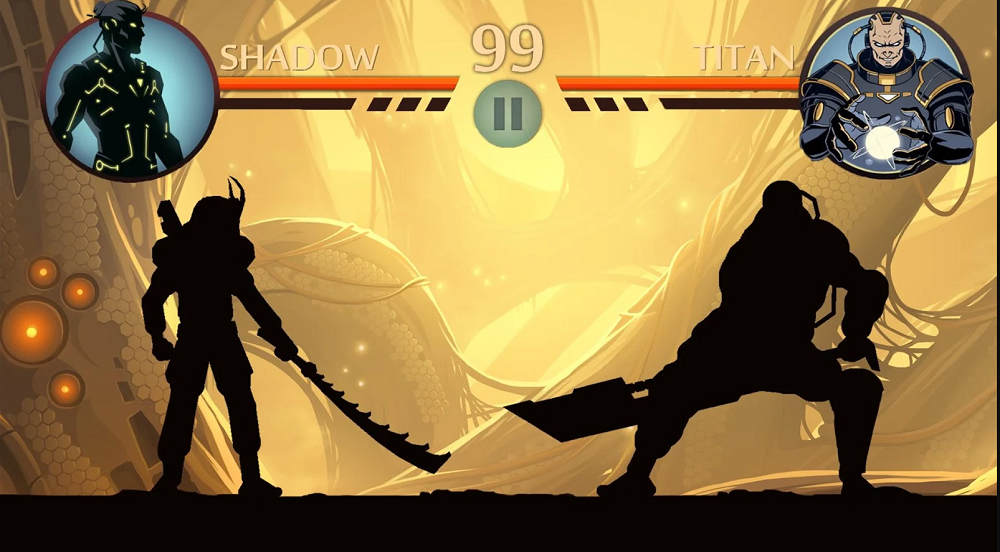
This is what Shadow Fight 2 looks like
When we launched Shadow Fight 2, there were no mobile fighting games yet. There were only ports of old console games. But then the competition greatly increased: such games as Mortal Kombat X, Marvel: Contest of Champions, Injustice 2 appeared. These games set a high bar for graphics, but moved away from the classic control scheme: the player must tap and slide on the screen, but the choice of actions is small. However, we find such management uninteresting. For us, fighting is the freedom to fight as you want, so we have kept the classic control with stick and buttons.
What about the shadows?
But one change was inevitable: to switch to 3d, we had to abandon the image of fighters in black silhouettes. We understood that this decision would cause indignation among fans of the series and a lot of questions from journalists. Without shadows, the game would lose the style that was its main feature. To prevent this, we have made the so-called “shadow mode” an important part of the game. When the player accumulates an energy bar, the location is darkened, and the character takes a shadow form. In this mode, special shadow abilities, a kind of magic, are available to him. Thanks to this mode, questions about silhouettes disappeared, and criticism was replaced by enthusiastic reviews.
Shadow Form and Shadow abilities
Team
But at the beginning of our journey, it was still far from rave reviews. We needed to develop expertise in 3d and grow specialists. When we made Shadow Fight 2, almost half of the employees were interns – then we actively developed a program to attract young talents. We are very pleased with this: by the time we started working on SF3, we had grown a lot of cool professionals and good people. Now they were faced with the task of taking the next step in their career.
At first, only a few people worked on the prototype of Shadow Fight 3. Gradually, their number increased due to the transition of people from SF2 and other projects or hiring new ones. Today, more than 70 people are working on the game, divided into about 10 teams. For comparison, Shadow Fight 2 was done by 30-40 people.
Scrum. New Faith
With the increase in the number of people on the project, the approach to management also changed. In order to cope better, we decided to implement the Scrum methodology. Before that, we already thought that we were working on scrum, but in fact it was a pseudo-scrum, rather a cargo cult. We used those parts of the methodology that we understood, and the rest was thrown away or simply died out over time. It is clear why many people criticize Scrum so much – they simply “don’t know how to cook it.”

This time we approached with all responsibility. First, we found the right literature and figured out the methodology, understanding why certain procedures and rituals are needed. Then we sent several of our managers to Munich to train Jeffrey Sutherland, one of the creators of Scrum. This was a turning point: the employees left for the training full of skepticism, but returned with burning eyes and began to convert others to a new faith. Later, we sent people to this training several more times, but having already prepared questions for Jeff.
For example, one of the questions was the scrum work of artists and animators. Scrum prescribes scheduling tasks for each sprint and evaluating their deadlines. With technical tasks that have formal requirements, everything is clear. But in the case of, for example, a picture, this is impossible: it is impossible to predict in advance how many iterations it will take to make it beautiful. To this question, Jeff advised us to break the task into stages. First, the sprint takes on the task of creating the first iteration of art according to formal requirements. After its completion, the adjustment stage begins. Requirements for corrections are written and a new task is started. This is repeated until the desired level of quality is reached.
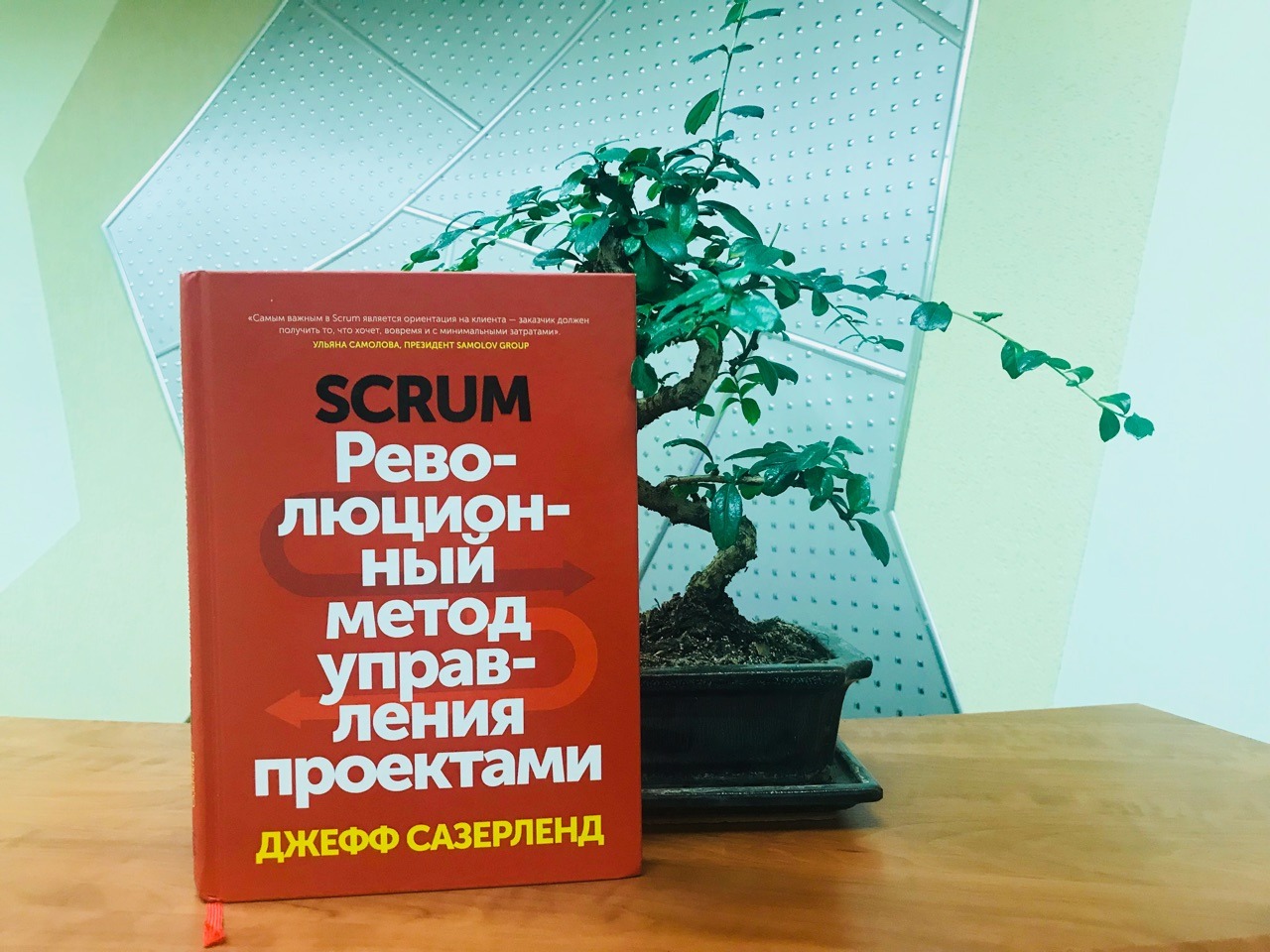
Over time, we modified the scrum, adapting it for ourselves. Scrum allows and even encourages customization and flexibility. For example, different teams have tried different tools and a different approach. Someone had a hard scrum, and someone had a softer one. In one team there was a fixed scrum master, and in the other he changed every week. As a result, the best solutions were passed between the teams and became part of the overall system.
Transition to 3D
But back to the development. The main challenge for us was, of course, 3d. We had to create cool characters, locations, weapons, armor and effects. And somehow shove it all into the phone, keeping a wide fleet of supported devices. As a result, we believe that it turned out.
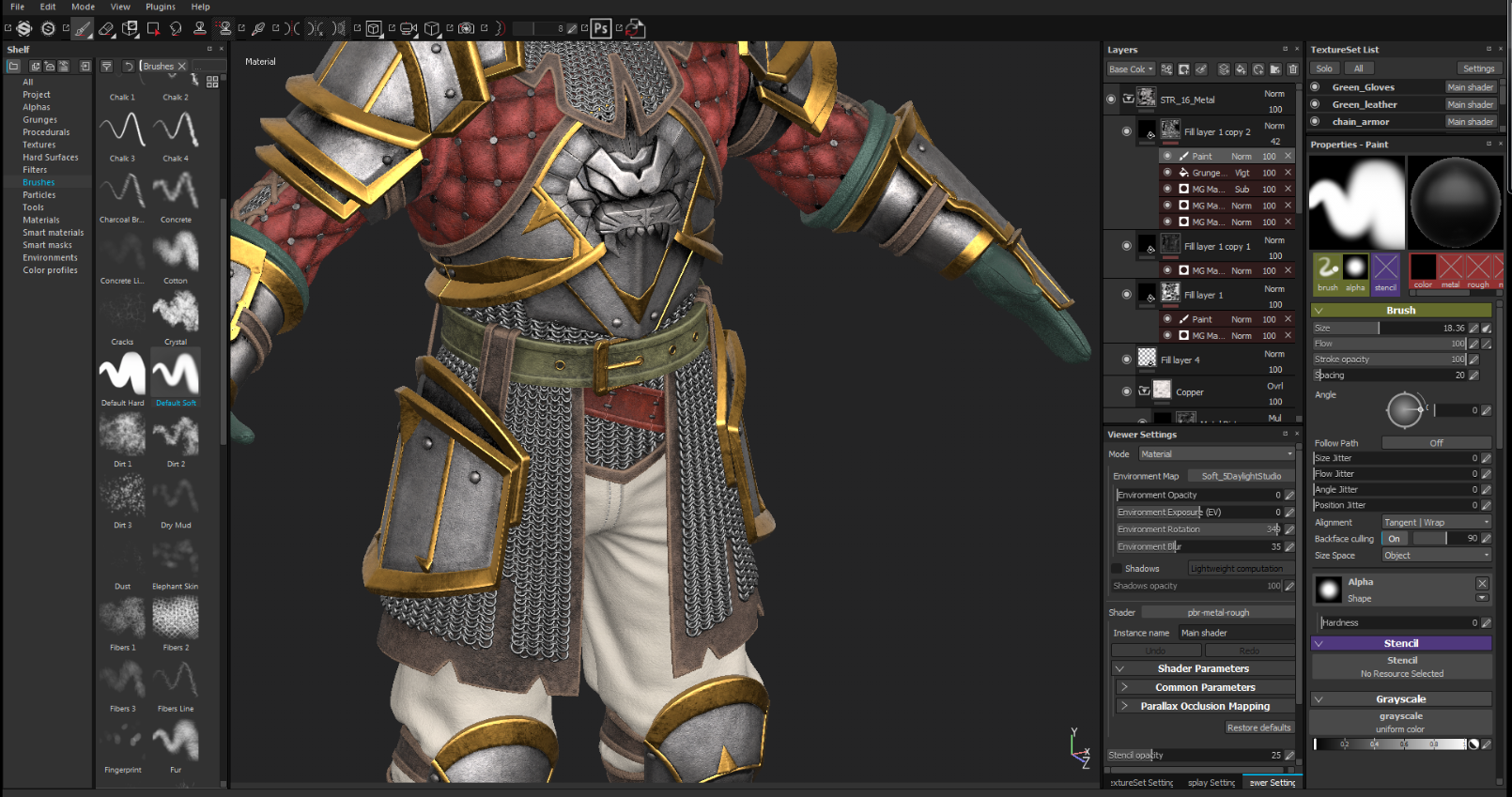
The first iterations of 3d graphics left much to be desired. We did what we could and it didn’t work out very well – the graphics looked cartoonish, and it was difficult to distinguish the characters of different factions. I had to turn to external consultants for help. Thanks to this, we understood a lot, and as a result we got a guideline.
Now the work on graphic content was more organized. The silhouettes of the characters, their own color scheme and visual style were chosen for the three factions, so that at first glance it was clear who was who.

Armor of the three factions
In addition to standardizing characters and locations, work was underway to improve graphics. Gradually it turned out to get away from cartoonishness, to make the picture more realistic. The first models of characters and locations had to be redone, and the artists made a “cemetery of discarded models” on one of the walls in the office.
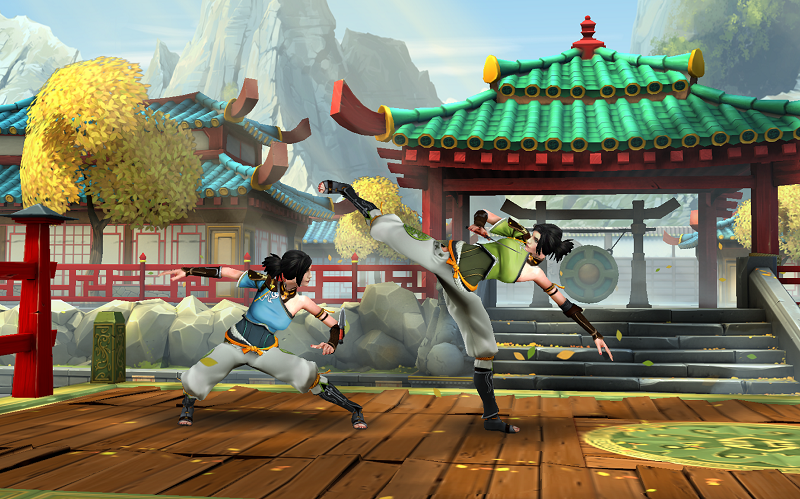
One of the first prototypes
Improved textures, lighting, shadows. There was a contour light and plumes from weapons. The quality has been growing, but there is a price for everything. We promised the players to release SF3 in the fall of 2016, but because of all the alterations, we did not meet this deadline at all. We had to postpone the release, and as a result, the game was released only a year later. But we believe that the result fully justified this measure.
Plot
The second part was dedicated to a vain warrior who opened the Gates of Shadows and set free demons from another world. For this, he paid with his corporeal shell, becoming a shadow, and was doomed to wander until he corrected the consequences of his act. In the end, once on the other side of the Gate, the hero finds himself in a world of futuristic technology and faces a powerful Titan.

The action of SF3 takes place years later than the second part. The demons have been exorcised, and the Gates of Shadows have been destroyed. But there is a shadow energy in the world that has mysterious powers. Three powerful factions are fighting for the possession of this resource, pursuing different goals. Some are afraid of shadow energy and want to destroy it. Others worship and strive to serve her. Still others see her as a source of power and dream of subjugating her.

In this story, we wanted to show how the world is changing, in which a new technology appears, thanks to which a new era begins. Conservatives are afraid of this technology, and enthusiasts are overly optimistic. Like nuclear power or artificial intelligence, technology carries both opportunities and dangers.
The main character starts as a representative of one of the factions and shares their goals. However, soon the plot twists, and it is no longer clear who is good and who is bad. After three chapters, in which they are given to play for each of the factions, the player will have to make a choice which one he likes more.
Fractions
The slogan of the game is “Your fight. Your style». We wanted to emphasize that the player can form his own style by choosing not only weapons, but also techniques and abilities. There are three fighting styles in the game, but you can mix techniques of different styles and create your own.
We came up with fractions based on the cultures of different countries. Here they are:
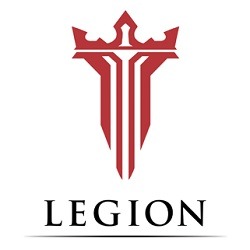
Legion
References: Western Europe, films about knights
Fighting style: warriors in strong armor with heavy weapons, rely on strength and crushing blows

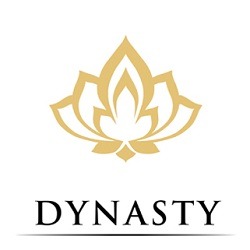
Dynasty
References: China, Kung fu, Chinese action movies
Fighting style: agile warriors, use long series of punches and surprise with acrobatic tricks


Heralds (Heralds)
References: Japan, anime, samurai, ninja
Fighting style: dangerous fighters delivering lightning-fast accurate strikes

Cinematics
To mark the beginning of our plot and show the three factions, we decided to make an intro video for the game. We already had the experience of creating cool intros for Shadow Fight 2 and Vector, but they were two-dimensional. SF3 needed something bigger.
We understood that a full-fledged 3d cinematics is a very long and expensive job, but this was also our dream. We have long wanted to try our hand at such a task, and now a favorable opportunity has appeared. Therefore, it was decided to create its own CG department.

We assembled a small CG team, came up with a plot for the video and drew an approximate storyboard. Several specialists were constantly in the office, the rest were involved remotely or on a temporary basis.
In the story, representatives of three factions come to the destroyed temple to take possession of an artifact – a sphere in which a shadow entity is enclosed. A battle takes place between them, as a result of which the sphere is broken, and the shadow energy breaks out. Next, the video has three alternative endings. What exactly will happen depends on the player’s actions, and he will be able to find out after going through three chapters.
The work on the video was not easy and lasted about two years. But in the end we are satisfied with the result, we got invaluable experience and a lot of fun. We hope that the video will become a beautiful “peacock tail” of the game, and will also help us in creating marketing and advertising materials.
Animation
Another of the goals of creating the video was the use of Cascadeur’s own animation technology. This is our program that allows you to manually create physically correct character animations without using stuntmen. We used this technology to create realistic animation for all games in the Shadow Fight and Vector series, and now we wanted to try to apply this to an animated video.
Animations have always been our main feature and pride. With Cascadeur, we make animations manually, without using motion capture, while creating smooth, spectacular and physically correct stunts.

Of course, technology alone is not enough for this. We consider the most important thing for animators to be what we call “watching enough”. After watching hundreds of martial arts films and many combat scenes, the animator develops an intuition that tells which pose and which movement is more spectacular.
Preparing for launch
At the beginning of 2017, it’s time to think about marketing. At the launch of Shadow Fight 2, we did not buy advertising at all – the game grew organically due to word of mouth. We believe that SF3 has no less potential for virality, especially since the strength of the brand has grown markedly over the years. However, the competition for the attention of users has increased many times. Therefore, we began to think about how else we can influence the success of the launch.
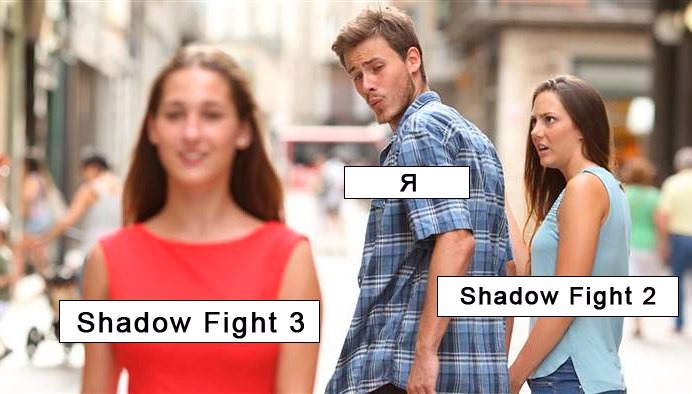
First, we set about reviving our social networks. Shadow Fight groups on Facebook and VKontakte had more than 6 million subscribers, but before that we were mostly limited to announcements of in-game events and answers to the question “When is SF3 release?”. Since the beginning of the year, we have been regularly posting information about the characters of the new game, about weapons and armor, talking about factions, fighting styles and organizing contests. We also recently started conducting trial streams – in general, we fueled the audience’s interest in our new project as much as possible.
To work with communities, we decided not to hire special employees, but to use first of all our guys – game designers, screenwriters, that is, people involved in the development of the project and who know it from the inside. This made it possible to communicate with the community in a language they understand.

The first stream took place on Vkontakte and gained more than 35,000 views
Millions of views
In addition to maintaining social networks, we took up video content. It’s no secret that now reviews and streams are a trend and one of the most powerful promotion channels. Fortunately, everything is fine with SF3 video: there is a spectacular 3d gameplay and a beautiful cinematics.
First we posted a short teaser on YouTube, then a full cinematics, then a gameplay video and finally a trailer for the game. Cinematics came in best of all: to date, it has already been viewed 5.5 million times only on our channel. Bloggers and fans of the game picked up the video to post and review it.
We understood that the video topic needed to be developed and started working with influencers. Shadow Fight 2 has a huge amount of video content created by fans on YouTube. There are videos that have gained more than 10 million views – and we still haven’t used it in any way.
Working with YouTubers
At the beginning of the summer, before the soft launch of the game, we sent out an offer to bloggers to be the first to do a review. Despite the fact that we did not offer money for this, many (even millionaire bloggers) agreed. And they did not lose – the first review scored more than 2.5 million views, becoming the most popular video for a long time for this author.
We recognized the experiment on working with influencers as successful and decided to scale up this experience. We gathered a small team to work with YouTubers, developed a plan for pre-release communications and began regularly giving bloggers new content and builds for reviews.
Participation in exhibitions
In addition, the influencer team has become a key link in the preparations for Gamescom and Igromir. We participated in both exhibitions for the first time, and at each of them we had tasks to work with the press and YouTubers. At Gamescom, we took a booth in a closed business area and held many successful meetings with partners and media – the results of these meetings were publications and videos.

Harry Slater, a Pocket Gamer journalist, was very impressed
Participation in the Russian Igromir was an even bigger experiment for us than a trip to Cologne. Since we had absolutely no idea whether Shadow Fight 3 would be able to compete for the visitor’s attention among Blizzard, Ubisoft and Sony games – these companies were our neighbors at the event. Well, what can I say? It was interesting, and we are pleased that we were able to show our project to a new audience, meet with fans and demonstrate cinematics on the stage of Comic Con .
Website and press kit
After participating in exhibitions, we started to deal with the content that we planned to use immediately before the release. First, the promo site www.shadowfight3.com . Before the release, it served as a business card site with cinematics and information about the release date of SF3. We’ve redone it and added more information about the new game: video content, screenshots, art, GIFs and a press kit – everything is available for download and integration. We hope that this will help the press and bloggers to better understand the plot of Shadow Fight, to understand the differences between the factions and the purpose of their existence. In addition, influencers will be able to design their materials and videos using our stylized content, which will benefit both sides.
Secondly, we created a launch trailer, where we talked about the main features of the third part – through it we expect to quickly convey to the fans of the game all the changes in SF3 compared to SF2.
Finish line
As a result, the development of the project took more than two years. In addition to the lack of experience, the main difficulty for us, of course, was the lack of time. The project turned out to be too big, and our quality requirements were constantly growing. As a result, first we disrupted the release date by shifting it by a year, and then we got a rather crumpled softlonch.
We launched the game in Canada in the summer and immediately saw a lot of things that needed to be redone. But it was already impossible to continue feeding the players breakfast without giving an exact date. Therefore, we went all in and announced that we would release the game on November 16 (in order to be sure to make it before the new year). It was very risky, considering the changes we started. For example, in a few months we have almost completely changed the interface.
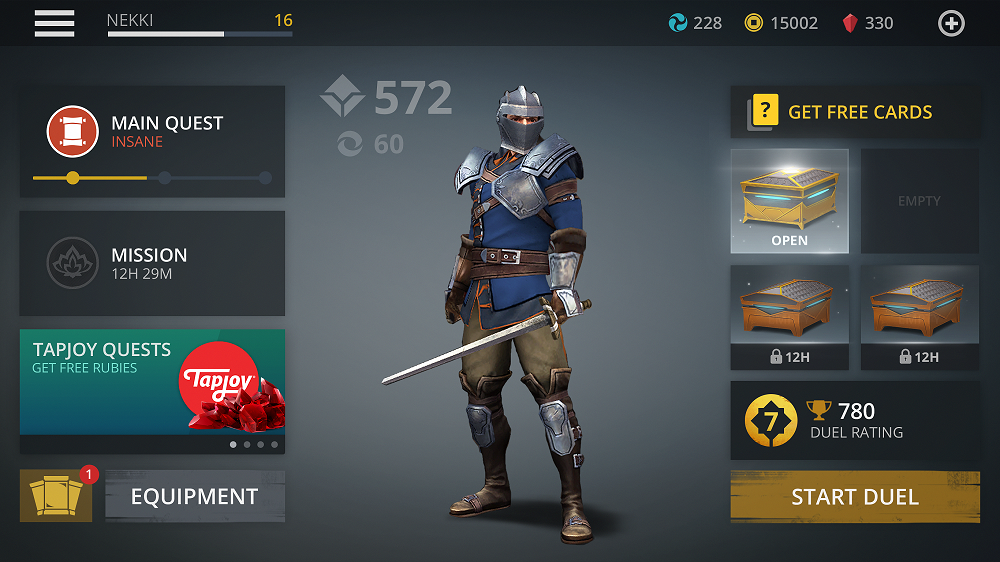
Finally, the release date has arrived. There are still a lot of minor flaws and rough edges in the game, but in general we managed to implement almost everything that we planned. After the release, the game will become more and more neat and polished every day, and about once every two months a new chapter of the plot and new game modes will be released.
Results
And so, despite all the difficulties, we launched our most ambitious project. We have invested a lot in it and, let’s not be afraid of these words, we were able to create our dream game. In addition, we have grown a strong team, brought our technologies to a new level, and reached a very high level of quality. Now new prospects have opened up before us, which we have also dreamed of for a long time: to enter the console market (we plan to port SF3 to PS, Xbox and Switch), add the long-awaited multiplayer to the battle (and not only one-on-one!) and even a little touch on the topic of esports.
